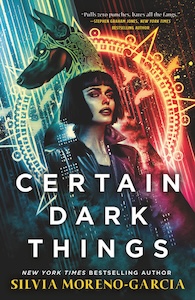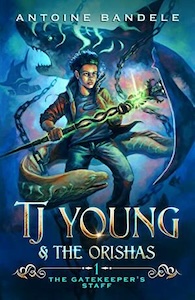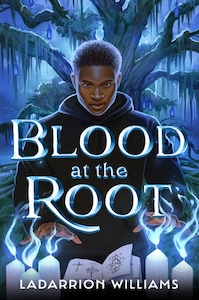“Season One: Iris and the Crew Tear Through Space!” by Cait Gordon
In a galactic network known as the Keangal, where space is accessible.
Lieutenant Eileen Iris and the command crew of the S.S. SpoonZ haven’t a clue what it means to be disabled. An unexpected conversation with an intergalactic janitor brings up the question but offers no answers before he’s ‘ported away.
Unfazed, duties resume as Iris manages an overprotective guidebot; Security Chief Lartha and her sentient prostheses offer kick-ass protection; Mr. Herbert’s inventiveness is a godsend (although he’s not quite grasped how to flirt); Commander Davan’s affable personality comes through whether trumpeted, texted, or signed; and Captain Warq’s gracious but firm leadership keeps everyone at their best.
Until on one mission, where the crew tears through space.
Just a little bit.
Review
I really enjoyed the characters, (which included both disability and LGBQIA+ representation), and the various adventures they all had. I thought showing how well they all worked together worked for the book and it’s a great concept. Here’s the thing – I would have enjoyed this more if the first chapter hadn’t contained the scene mentioned in the description where the intergalactic janitor calls the crew disabled and the crew has no idea what it means.
I understand the intent behind the book with all access needs being taken care of and everything is just fine – similar to the Star Trek: The Next Generation universe where everything is taken care of (with some exceptions once you look beyond the Enterprise). But I also felt like the author wanted to have it both ways. Never mentioning disability, just accessibility needs but there are still moments in the book where needs aren’t always met completely or in a way that works for everyone. Also there was a sub-plot about one character who was not sensitive to diverse body-minds and had to be made to be more aware of his behavior.
Now it could also be said that the reason “disability” is never mentioned is that several, if not all, of the crew members are actually aliens who have different access needs that present as real world disabilities (autistic, d/Deaf, vision issues, non-speaking with mouth words, etc). Which would be the actual reason why disability is never brought up because they’re not disabled in a way that we’d call it. But other terminology related to disability is used the same way we would use it, accessibility, wheelchairs, guide bots (as apposed to guide dogs) and so on. While you may be able to talk about various access needs without using the word disabled it makes it awkward to read about as a disabled person.
Also everything is ideal for the crew but no mention is made of anyone with higher support needs or intellectual disabilities. How are they taken care of in this universe? Are they helped or is all of this access for only the elite? It’s implied at one point that healthcare is paid (for some at least) but there are gaps in the world building that lead to more questions.
I honestly fee torn about this review, because I think without the “but you’re disabled” scene at the beginning I would have been focusing on the characters and the plot which are very good. In many ways the book does what the author appears to want to do with regard to showcasing how things could be. Unfortunately, for me the scene in the beginning brought up all the various questions about how the universe works. How did they get where they are without needing to use the word disabled? I also do wonder if I’m being hyper critical because I’m disabled too and have certain ideas about what we need to be saying about disability seem to be different from the author’s ideas.
Warnings and additional reviews are available on the StoryGraph page for “Season One: Iris and the Crew Tear Through Space!”.
Book Details

- Author’s Website
- Cait Gordon
- Publisher / Date
- Renaissance Press, September 2023
- Genre
- Science Fiction
- Page Count
- 302
- Completion Date
- August 4, 2024




